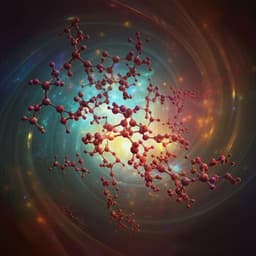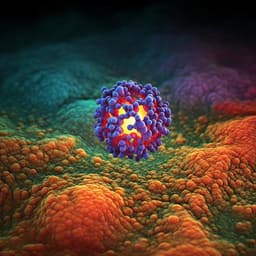Introduction
The design of dynamic catalysts capable of in situ control over multiple stereogenic centers remains a significant challenge in asymmetric catalysis. While advancements have been made in creating reconfigurable catalysts, achieving predictable control over multiple stereocenters within a single molecular scaffold remains largely unexplored. Current strategies often involve connecting an intrinsically achiral catalytic unit to a molecular, macromolecular, or supramolecular chiroptical switch, enabling the generation of enantiomers with opposite configurations (enantiodivergency). Another approach utilizes a mixture of pseudo-enantiomeric catalysts, allowing for stereodivergent synthesis through sequential transformations of a substrate anchored to a molecular machine. However, these methods often face challenges such as stimulus-substrate incompatibility, imperfect opposite selectivities of catalyst pseudo-enantiomers, and slow stereochemical switching. The development of a switchable asymmetric catalyst for in situ control of multiple stereogenic centers within a single molecular scaffold represents an unmet challenge.
Helical catalysts, particularly those with supramolecular helices, offer unique advantages. In supramolecular helices, a chiral comonomer dictates the helix sense, directly influencing reaction direction and enantiomer selection. The dynamic chirality of these helices allows for interconversion of their screw sense, which is crucial for switching selectivity. The "sergeants-and-soldiers" and "diluted majority rule" principles operative in these systems further enable optimal selectivity by tuning the polymer composition. The inherent dynamic nature of these supramolecular helices allows for in situ switching of helix handedness and subsequent selectivity reversal.
Previous work demonstrated the use of helical hydrogen-bonded stacks of BTA achiral phosphine ligands and enantiopure monomers for enantioselective copper-catalyzed hydrosilylation and hydroamination. Changing the major BTA enantiomer inverted catalyst selectivity. However, controlling the configuration of two stereocenters within the same scaffold remained unaddressed. This current study aims to leverage the unique properties of these BTA helical catalysts to achieve stereodivergent synthesis of an amino alcohol.
Literature Review
Existing literature highlights several approaches to switchable asymmetric catalysis. Reconfigurable catalysts, often based on molecular switches or non-covalent interactions integrated with catalytic units, aim to control reaction outcomes. However, these systems face limitations including compatibility issues between stimuli and reactants/catalysts, achieving perfectly opposite selectivities, and the speed of the stereochemical switch. Previous work has demonstrated the use of light, redox potential, and chemical triggers to switch catalyst enantiomeric states; however, implementing these systems for in situ control of multiple stereogenic centers remains a challenge.
Another approach involves utilizing a substrate anchored to a molecular machine containing two pseudo-enantiomeric catalysts for sequential transformations, providing elegant stereodivergent synthesis. However, the stoichiometric nature of this method limits its scalability. Several challenges hinder the wider applicability of these existing methods, including difficulties in achieving rapid and complete stereochemical switching, maintaining high opposite selectivities, and ensuring compatibility between the switching mechanism and catalytic process.
Methodology
This study utilizes benzene-1,3,5-tricarboxamide (BTA) monomers for the construction of supramolecular helical catalysts. The achiral ligand BTA P, incorporating CF3 groups, is coordinated to copper. Chiral BTA comonomers derived from leucine ((S)-BTA and (R)-BTA) are used to control the helix handedness. An achiral additive, α-BTA, enhances the "sergeants-and-soldiers" and "diluted majority rule" effects, allowing for high selectivity even with a low amount of chiral monomer. These monomers self-assemble into helical copolymers in toluene, forming either right-handed or left-handed helices depending on the dominant chiral comonomer.
The cascade reaction involves 3-vinylacetophenone (VPnone) as the substrate, undergoing consecutive hydrosilylation (HS) and hydroamination (HA) steps. The concomitant process involves simultaneous initiation of both reactions, using a fixed composition of the helical terpolymer for both steps. In the sequential process, the reaction is performed in two steps. The initial hydrosilylation step is conducted using a helical terpolymer with a specific composition. The handedness of the helical catalyst is switched by the addition of an excess of the chiral monomer initially in the minority within the terpolymer. Then, the hydroamination step is performed using the modified supramolecular tetrapolymer with the switched chirality.
The research used several techniques for characterization. Isothermal Titration Calorimetry (ITC) determined catalyst stability in toluene at different temperatures. Circular Dichroism (CD) spectroscopy monitored helix handedness and the efficiency of stereochemical switching. Nuclear Magnetic Resonance (NMR) monitored the reaction progress and provided yields, while High-Performance Liquid Chromatography (HPLC) using a chiral column determined the selectivity (enantiomeric and diastereomeric excess) of the different isomers of the product, APnol. Molecular Mechanics (MM) and Molecular Dynamics (MD) simulations were also used to determine the absolute and relative configuration of the product stereoisomers.
Key Findings
The study successfully demonstrates the control of stereoisomer formation in a hydrosilylation/hydroamination cascade reaction using switchable supramolecular helical catalysts. The four possible stereoisomers of the amino alcohol, APnol, were obtained with similar selectivity (approximately 70-79% of the major stereoisomer) using both the concomitant and sequential approach. The concomitant approach involved simultaneous HS and HA reactions using a fixed handedness helical catalyst while the sequential approach involved switching the helix handedness between the two reaction steps. The results showed that in the concomitant process, (R,S)-APnol was obtained using a catalyst based on (S)-BTA and (S,R)-APnol was obtained using (R)-BTA, both with high enantiomeric excess and diastereomeric ratio.
In the sequential process, the stereochemical switch was achieved using an excess of the chiral comonomer, changing the helix handedness and, thus, the stereochemical preference. Initially, low yields were observed in the sequential reactions, attributed to catalyst deactivation under aerobic conditions. However, optimization using anaerobic and anhydrous conditions significantly improved yield while maintaining the targeted selectivity for (R,R)-APnol and (S,S)-APnol. Overall, the study demonstrates that the enantioselectivity of the reaction is controlled by the catalyst, not the substrate, and it highlights that the amount of chiral monomer in the helical catalyst is only 5 mol%, which is quite low compared to the total number of copper catalyst (20 copper catalytic centers for one chiral monomer).
Furthermore, a detailed analysis of the effects of the achiral additive (α-BTA) and a secondary phosphine ligand on the reaction yield and selectivity was conducted. A secondary phosphine ligand was found to be beneficial for the yield, while α-BTA was beneficial for both the yield and selectivity. CD spectroscopy confirmed the switching of the catalyst handedness upon addition of the chiral trigger in the sequential process. This switching is a key aspect of controlling the stereochemistry of the products obtained. The authors demonstrated this by performing a sequential reaction with the switching step and a sequential reaction without switching, allowing them to observe that, when the switch is complete, the main product obtained differs significantly from what is observed in the case where the switch is incomplete.
Discussion
This work successfully demonstrates a novel approach to asymmetric stereodivergent catalysis using a switchable supramolecular catalyst. The ability to obtain all four stereoisomers of an amino alcohol in a one-pot reaction significantly simplifies the synthetic process compared to traditional methods requiring multiple catalysts and/or multi-step procedures. The strategy relies on the dynamic control of helix handedness, directly linking the catalyst's chiral environment to the product's stereochemistry. The use of an achiral ligand highlights a powerful approach to artificial chirogenesis, manipulating the supramolecular assembly rather than relying solely on chiral ligands. This approach offers a significant advancement in achieving stereochemical control in catalytic processes.
The findings address the challenges faced by existing switchable catalysts by effectively controlling both the chirality and dynamicity of the supramolecular assemblies. The relatively high selectivities observed in both the concomitant and sequential processes indicate the robustness and effectiveness of the developed strategy. The observed catalyst deactivation under aerobic conditions highlights potential areas for improvement, but the optimization achieved under anaerobic conditions demonstrates the viability of the concept. These results provide a significant contribution to the field of asymmetric catalysis, offering a new and versatile approach to stereodivergent synthesis.
Conclusion
This study successfully demonstrates asymmetric stereodivergent catalysis using switchable supramolecular helical catalysts. The ability to access all four stereoisomers of an amino alcohol in a one-pot synthesis represents a significant advance over traditional methods. The dynamic nature of the supramolecular helices and the effective control of their handedness, along with the use of a low amount of the chiral monomer, are key elements of this achievement. Future research could focus on extending this strategy to other catalytic processes, controlling more stereocenters, and investigating the use of different chiral monomers for even broader control over product stereochemistry. Improving the catalyst stability under aerobic conditions would enhance the practical utility of this method.
Limitations
While this study demonstrates a highly innovative approach to stereodivergent synthesis, several limitations warrant consideration. The yields obtained in the sequential process, even under optimized conditions, remain slightly lower than those in the concomitant process. The origin of this difference warrants further investigation. Additionally, the optimized conditions for the sequential process required anaerobic conditions, which might limit its scalability or applicability in certain settings. Further investigation into enhancing catalyst stability under aerobic conditions could improve the practical applicability of this approach.
Related Publications
Explore these studies to deepen your understanding of the subject.







